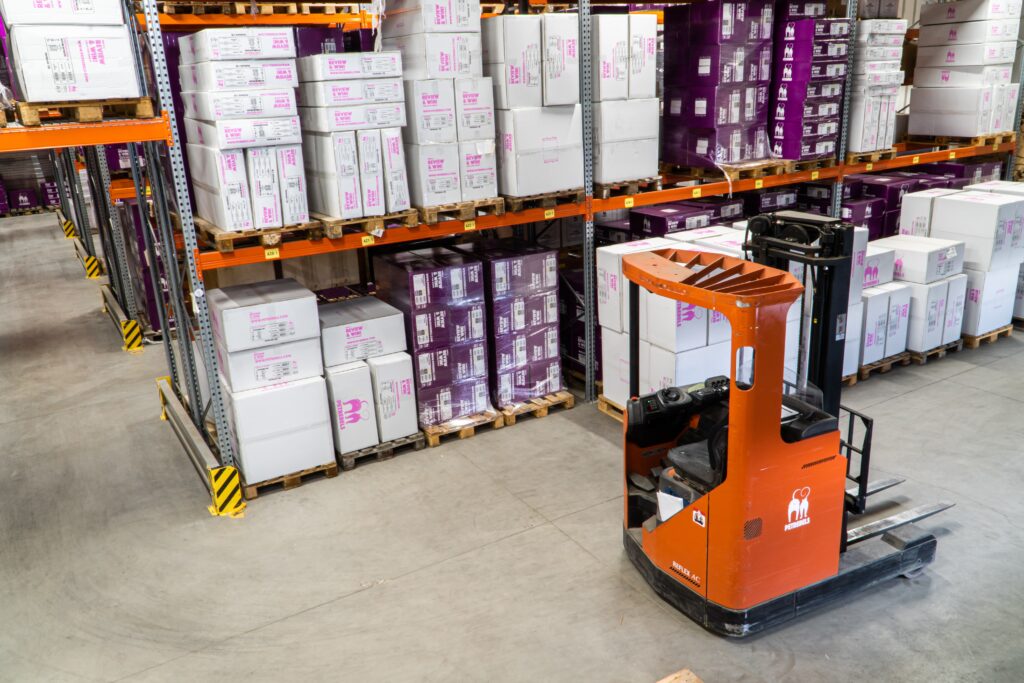E-commerce Growth Fuels Huge Demand for Industrial Space (Retail Fundamentals Improve in Canada)

The rise of e-commerce has transformed the retail industry, with more and more consumers opting to shop online for everything from groceries to clothing. This shift has led to a significant increase in demand for industrial space in Canada, as retailers and logistics companies race to keep up with the pace of online orders.
According to data from Statistics Canada, retail e-commerce sales in Canada reached $4.2 billion in the fourth quarter of 2020, up from $3.5 billion in the same quarter the previous year. This growth has been particularly strong in the food and beverage, health and personal care, and general merchandise categories. Looking ahead to 2022, retail e-commerce sales have moderated since July 2022 but still surpass pre-pandemic levels. The percentage of total retail sales attributable to e-commerce increased from 3.9% in 2019 to 6.2% in 2022 (July year to date).
Ottawa’s industrial market continues to thrive amidst a persistent shortage of available properties. In Q3 2022, the vacancy rate decreased to an impressive 0.8%, while the availability rate remained stable at 1.3%. This quarter (Q3 2022) witnessed a significant net absorption of 138,398 square feet. Average net asking rents soared to a new record high of $14.77 per square foot, reflecting an 11.3% quarterly increase and an impressive 28.4% year-over-year growth rate. Construction activity remains robust, with eleven buildings totaling 677,933 square feet currently under development in East Ottawa and Kanata (Colliers Canada, 2022). Despite the rising interest rates, the market continues to witness strong competition with persistent offers for industrial properties. Ottawa’s industrial sector presents a lucrative landscape for business growth and investment.
This surge in demand has been a boon for landlords and developers, who are seeing increased interest in their properties and are able to charge higher rents. It has also led to a wave of new construction, as developers rush to meet the growing demand for space.
The current supply chain landscape presents a myriad of challenges, including port congestion and disruptions resulting from the COVID-19 pandemic. In response, businesses are reevaluating their manufacturing strategies and embracing reshoring, a trend that involves bringing production closer to home. This shift is driven by the need to mitigate supply chain risks and reduce reliance on overseas production. As a result, we are witnessing an increase in direct foreign investment, with companies seeking to establish manufacturing facilities in proximity to their target markets. By doing so, they aim to address issues such as limited availability, rising rents, and port congestion along the West Coast. Many companies are now turning to Southeast regions and East Coast ports, capitalizing on better supply chain management and logistical efficiency (Globest, 2023).

One of the most significant changes brought about by e-commerce is the need for last-mile delivery facilities, which are used to store products closer to consumers and speed up the delivery process. Last-mile facilities are typically located in urban areas and require a smaller footprint than traditional warehouses. This has led to a surge in demand for smaller industrial spaces, particularly in major metropolitan areas like Ottawa, Toronto, and Vancouver.
According to CBRE’s Canadian Real Estate Market Outlook 2023, demand for industrial space is expected to remain strong over the next few years, driven in large part by the continued growth of e-commerce and the need for last-mile logistics facilities (CBRE, 2023). The report notes that while vacancy rates may rise slightly in the short term as new supply comes onto the market, the long-term outlook remains positive.
In addition to the growth in e-commerce, there are several other factors contributing to the strength of the Canadian industrial real estate market. For one, Canada’s strong economy and stable political environment make it an attractive destination for foreign investment. Additionally, the country’s close proximity to the United States and its trade agreements with other countries make it a desirable location for logistics and distribution facilities.
E-commerce and last-mile delivery weren’t the only trends impacted by the pandemic. With Canadians spending more time at home and with fewer options to spend their money, home renovation spending spiked by almost 50%, leading to increased demand for industrial space from the residential construction sector.Animal rescue software
Moreover, the demand for data centers has also contributed to the growth of the industrial real estate market. With the rise of cloud computing and big data, more companies are in need of data centers to store and process their data. This has led to an increase in the development of data centers, which require significant amounts of industrial real estate. However, the market is not without its challenges. The rising cost of construction materials, labor, and land is putting pressure on developers to find ways to build more efficiently and cost-effectively. Investors and developers who are able to navigate the challenges of the market are likely to see significant rewards in the years ahead.
In conclusion, the industrial real estate market is a key player in the real estate industry and plays a crucial role in supporting the economy. Its growth can be attributed to various factors such as globalization, e-commerce, and the rise of technology. While the market faced challenges during the pandemic, it has proven to be resilient and has continued to grow. With the continued development of new technologies, robust construction and renovation activity, reshoring trends in manufacturing, and the growth of e-commerce and data centers, the industrial real estate market is expected to remain a vital component of the real estate industry for years to come.
Our Office
- 2191 Thurston Drive
- 613.224.5464
- info@merkburn.com
- Privacy Policy